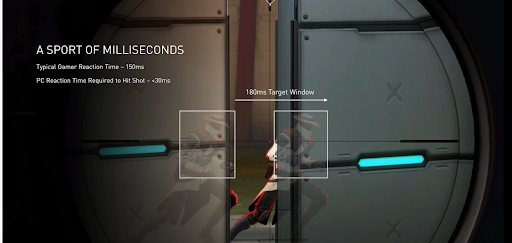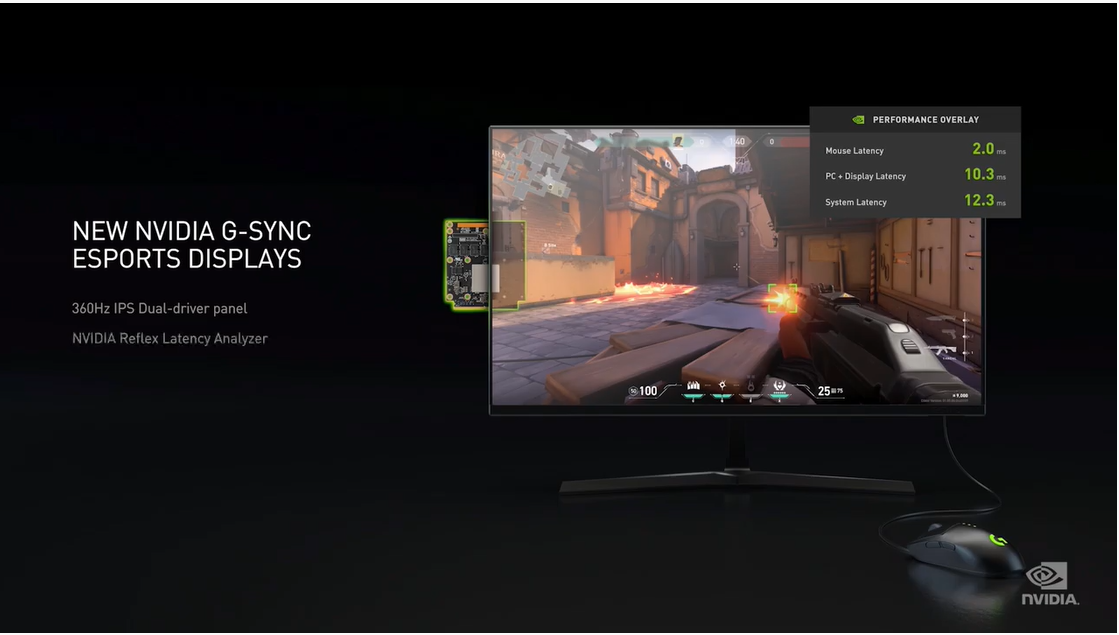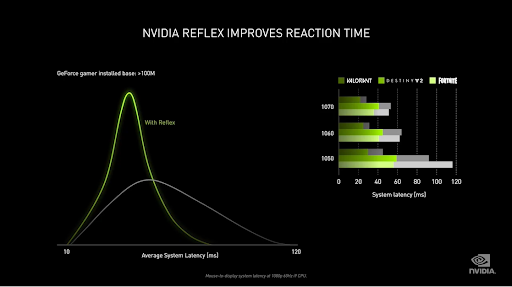Nvidia Reflex Latency Analyzer Claims to Boost Gaming Performance by Reducing Lag
Because every millisecond counts

Nvidia's got a new trick up its sleeve, fitting for eSports gamers who treasure every millisecond. The Nvidia Reflex Latency Analyzer announced today is a tool that optimizes the rendering pipeline across the CPU and GPU to reduce latency by up to 50%, Nvidia CEO Jensen Huang said today.
Nvidia will release the feature in September via a Game-Ready driver with support for Valorant, Fortnite Apex Legends, Call of Duty: Warzone and Destiny 2. However, owners of upcoming 360Hz monitors only need to connect a mouse (a certified one, according to Asus) to use it via the on-screen display (OSD).
According to Nvidia, Reflex Latency Analyzer will help gamers, which have a typical reaction time of 150 milliseconds, improve in eSports. Huang pointed to an opponent travelling 1,500 pixels per second in Valorant (pictured above) and being vulnerable for only 180 milliseconds. Therefore, the gamer can only hit the opponent if their gaming PC adds less than 30 milliseconds.
Nvidia today also pointed to IPS monitors from Asus (the ROG Swift PG259QNR announced today), Dell (the Alienware AW2521H), Acer (the Predator X25) and MSI having Nvidia Reflex Latency Analyzer built in as well.

Of course, buying one of these 360Hz monitors isn't the only way to test monitor latency. For 1080p monitors, you can use a Bodnar analyzer that's around $200 to measure signal lag, but not control or system lag. You can also use a photo sensor and oscilloscope that might cost $7,000. But for our testing, we use a Casio Exilim EX-ZR100 camera that costs about $300. We analyze frame by frame and count the number of milliseconds between mouse input and the appearance of an image, as well as the top-to-bottom draw time for each frame (you can learn more in our How We Test PC Monitors article). Nvidia's tool will provide more information and without any counting on your end.
Editor's note: This article was updated with additional information from Asus.
Get Tom's Hardware's best news and in-depth reviews, straight to your inbox.

Scharon Harding has over a decade of experience reporting on technology with a special affinity for gaming peripherals (especially monitors), laptops, and virtual reality. Previously, she covered business technology, including hardware, software, cyber security, cloud, and other IT happenings, at Channelnomics, with bylines at CRN UK.
-
Giroro If you know how much it cost to buy your PC, then you don't need a 360Hz monitor.Reply
Besides, pixel response times are what matter, not refresh rates. It doesn't matter how many frames you try to dray to the screen if the pixels can't physically change fast enough to display them. -
TJ Hooker A bit of clarification in case anyone got a bit confused (as I was):Reply
Nvidia Reflex reduces latency. It is comprised of the NR SDK (which includes a Low Latency Boost feature) which game devs can use, and an Ultra Low Latency Mode in the driver. It does not require a special mouse or monitor. You need a 900 series or newer GPU to take advantage of NR SDK (Boost feature works on any GPU though).
Nvidia Reflex Latency Analyzer does not reduce latency, it merely measures latency. It requires a special mouse + monitor. Not seeing anything about GPU requirements.
